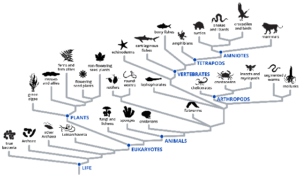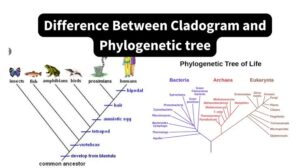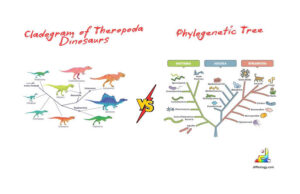Back to: ZOOLOGY 200 Level
WELCOME TO CLASS
Let’s get ready for another exciting session, dear scholar. Today’s lesson is about Cladistics and Tree Diagrams—two essential tools scientists use to study and visualise the evolutionary relationships between organisms, especially invertebrates. This topic will help you understand how scientists organise life into groups based on shared ancestry and characteristics.
Cladistics And Tree Diagrams
Understanding cladistics
Cladistics is a method of classifying living things based on common ancestry. In this approach, organisms are grouped into clades—each clade includes an ancestor and all its descendants. What makes this method special is that it focuses only on evolutionary relationships and shared features that are inherited from a common ancestor.

For example, all animals with a backbone (vertebrates) belong to a single clade. Similarly, invertebrates can also be grouped into clades based on features like body symmetry, segmentation, or developmental patterns.
How cladistics works
Cladistics relies on identifying shared derived characteristics—these are traits that evolved in the most recent common ancestor and are passed down to all its descendants. Scientists compare these traits across different organisms to group them correctly.
Let’s say we are comparing a flatworm, an earthworm, and an insect. The presence of segmentation in earthworms and insects but not in flatworms shows that earthworms and insects share a more recent common ancestor, forming a clade separate from flatworms.

What is a cladogram?
A cladogram is a diagram used in cladistics to show relationships among organisms. It looks like a branching tree, where each point (called a node) represents a common ancestor. The branches show how different groups evolved from that ancestor.
These diagrams don’t show time or how different the organisms are physically; instead, they focus purely on evolutionary connections. By studying cladograms, scientists can make predictions about characteristics of unknown or extinct organisms.
Difference between cladogram and phylogenetic tree
Although similar in appearance, a phylogenetic tree may include information about the time of divergence or degree of evolutionary change, while a cladogram simply shows the order of branching. Both are valuable, but cladograms are more focused on relationships based on shared traits.

Summary
- Cladistics groups organisms based on common ancestry and shared derived traits.
- A clade includes an ancestor and all its descendants.
- Cladograms are tree-like diagrams that represent evolutionary relationships.
- Cladistics helps scientists understand and organise the diversity of life.
Evaluation
- What is a clade in cladistics?
- How is a cladogram different from a phylogenetic tree?
- Name two shared derived traits that could be used in classifying invertebrates.
- Why is cladistics important in evolutionary biology?
By mastering cladistics, you’re learning how scientists trace the history of life and relationships among organisms. Keep that brain sharp and spirit curious—Afrilearn is proud to be with you every step of the way. Ready for the next adventure?
